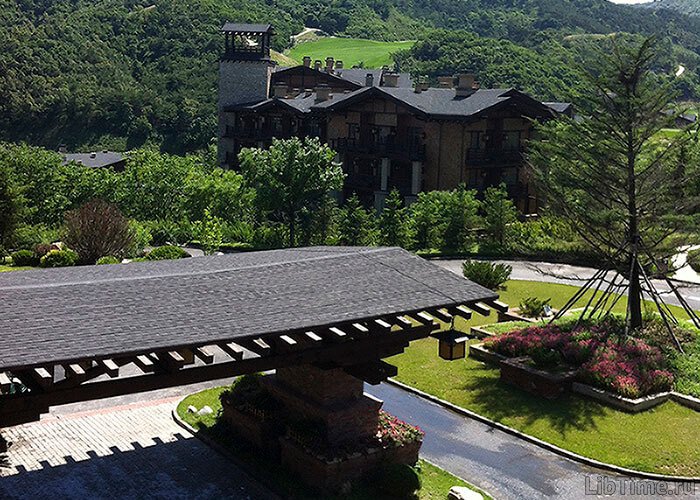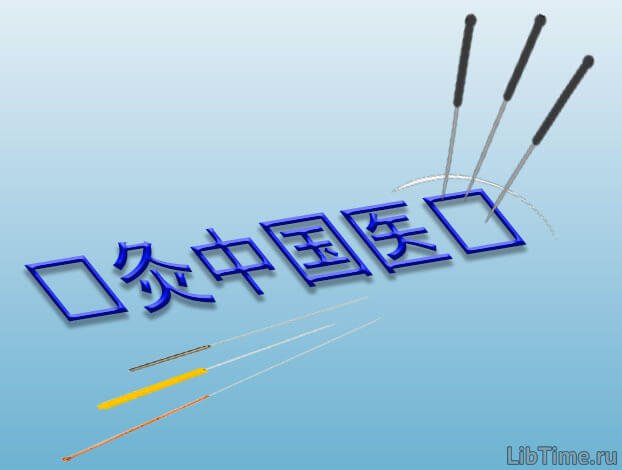Chinese medicine in the 20th century
Chinese medicine has reached a higher level in the 20th century. The PRC government is doing a great deal to train qualified personnel in the field of national medicine. 
Institutes of Chinese Medicine
There are now four institutes of Chinese medicine in the country with a six-year term of study. They are open to students who have completed a full high school education. These institutes train doctors of national medicine of the highest qualifications, mainly "cadres for cadres". In addition, there are Chinese medicine schools with a 4-5 year term of study.
They are designed for people with incomplete secondary education, health care practitioners and train mid-level specialists. At the same time, the training of new personnel is also encouraged through individual apprenticeship. As for the bulk of already practicing doctors, the policy towards them is particularly flexible.
On the one hand, the aim is to train them in the correct methods of treatment, and on the other hand, in special schools and evening schools they improve their qualifications and knowledge of the practice and theory of medicine.
Special medical schools
According to the data given in the book of Jing Xin-chung, 21 special medical schools have been established in the republic. They teach such disciplines as anatomy, physiology, diagnostics, infectious diseases, etc. in order to improve the qualification of doctors and teach them the basics of modern science. The duration of training in them is from 8 months to one and a half years.
There are also many short-term courses, including correspondence courses. The Institute of Traditional Medicine in Beijing supervises the work of the latter. Its employees prepare texts of lectures for the students of the courses and send them to the field.
Seminar classes for doctors
Such a form of advanced training of physicians as seminars for extramural physicians at county hospitals has also become widespread. This is how it was conducted, for example, in Tun County. A group of traditional medicine physicians met twice a week at an outpatient clinic. At one session, the outpatient clinic doctor explains the material of the next lecture and answers questions.
During the second session, the cadets themselves discuss the topic. For this purpose, a seminar interview is held. This method of training doctors of traditional medicine is the most accessible and popular. Since most of them are also engaged in agriculture in addition to their medical work, it is very convenient for them to study without taking time off from their daily work.
Training of Chinese Medicine Researchers
China has also taken serious measures to train Chinese medicine researchers. The Ministry of Health has set up special courses at the Institutes of Advanced Training, including three groups.
- The first group trains the teaching staff of the advanced training courses for people's physicians.
- The second group includes trainees who specialize in Chinese medicine treatment methods.
- The third group specializes in the study of medicinal preparations, mainly of plant origin.
Chinese medicine doctors with general secondary education and some practical experience are admitted to these courses. The period of training is 5 years.
Medical Research Institute
The care and serious attention paid to domestic medicine by the People's Government of China is evidenced by the establishment of a special Medical Research Institute in December 1955.
Its main task is to study and put in order the heritage of domestic medicine, enrich modern medicine and improve public health by applying scientific methods. The research institute has three laboratories:
- Surgery and Therapeutics,
- zhenqiu therapy (zhen means acupuncture or acupressure; qiu means cauterization),
- Chinese medicines.
It also operates a clinic and courses in Chinese medicine. The laboratories of surgery and therapy are divided into sections:
- Internal Medicine,
- pediatric,
- Women's,
- Ophthalmology,
- general surgery,
- bone.

Zhenqiu Therapy Laboratory has sections:
- Circulation,
- digestion,
- respiration
- diseases of the nervous system.
The most important topics of research work of these two laboratories are the study of those common diseases, in the treatment of which Chinese medicine has achieved a noticeable effect, and some difficult to cure, poorly researched diseases.
In the clinical department of the Institute, only methods and remedies of Chinese folk medicine are used, which are preceded by careful re-diagnosis of the disease and generalization of the results of the preliminary treatment of this disease by methods of Western medicine. The laboratory of Chinese medicines has the offices of:
- pharmacognosy,
- pharmacology,
- chemical analysis,
- herbal dilution and dosage.

The main task of this laboratory is:
- to study and put in order the norms and standards for common Chinese medicines;
- to explain, based on the theory of modern science combined with clinical practice, the pharmacology and efficacy of Chinese medicines;
- improving the dosage of Chinese medicines;
- improving the cultivation technique of medicinal plants.
The institute's clinic has modern equipment and many departments, where a large number of patients are admitted and research is carried out in the course of ordinary treatment. In Chinese medicine courses, doctors from Western medicine learn the theory of Chinese science and its therapeutic methods.
The scientific workers of the institute are famous doctors of Chinese medicine and the best specialists of Western medicine transferred from different parts of the country. The doctor Liu Xin-chu gives interesting data about the work of the Institute. For more than two years of the Institute's existence, 30,176 patients have undergone clinical treatment, many of whom have been relieved of serious diseases.
For example, six patients suffering from optic nerve atrophy were successfully treated in the section of eye diseases. Good results were achieved by doctors of the bone section in the treatment of bone tuberculosis. Another method of Chinese medicine for the treatment of bone injuries, in which massage alone is applied to certain points of the injured limb, etc., also gives good results.
A noticeable effect has been achieved in the treatment of such internal diseases as diabetes mellitus, inflammation of the liver and gall bladder. Chinese medicine is also of great benefit in the treatment of female diseases. Zhenqiutherapy gives encouraging results in the treatment of many diseases and especially nervous diseases.
In recent years, the Laboratory of Zhenqiutherapy has also conducted tests in the treatment of pulmonary tuberculosis, schistomagosis and bronchial asthma and achieved satisfactory results. The laboratory, together with the Beijing Tuberculosis Institute, set up a group which, beginning in 1956, began treating 195 patients with pulmonary tuberculosis with zhenqiutherapy.
The effectiveness of the treatment is reflected, in particular, in the elimination of such symptoms of the disease as night sweats, insomnia and lack of appetite. Much work has also been done on the theory of zhenqiu therapy.
Thus, tests of zhenqiu therapy on dogs have shown that it has an effect on the peristalsis of the intestines and stomach, on the chemical composition of the blood. In the 60s, research is being conducted to definitively identify the points for zhenqiu therapy. In addition, the Chinese Medicines Laboratory has performed a number of studies on the pharmacology of several dozen Chinese medicinal remedies.
The study of Chinese folk medicine by doctors of Western medicine
The study of Chinese traditional medicine by doctors of Western medicine is the most important condition for the successful development of Chinese traditional medicine. On this basis, the Institute has organized the study of the theory and technique of Chinese folk medicine by Western science in the past two years, so that Chinese national medicine can be inherited by doctors with modern scientific knowledge.
The study of Chinese folk medicine by doctors of Western medicine is carried out by,
- regular specialized training,
- on-the-job training.
There were 76 doctors of Western medicine who attended the regular courses. They studied some of the most important classical books of Chinese medicine and underwent clinical practice in hospitals.
After studying Chinese medicine according to a certain system, people who did not believe in it before now unanimously believe that domestic medicine is an inexhaustible source of folk wisdom, experience and knowledge and are eager to study it more deeply. Western medicine doctors who have learned Chinese medicine through clinical work can now already apply its methods to treat a number of diseases.
Chinese medicine is attracting more and more serious attention abroad. Trainees from the USSR, Korea, and Vietnam came to China to study zhenqiutherapy; in addition, there were trainees who studied surgery and therapy, the history and pharmacology of Chinese medicine.
During the period from April 1956 to December 1957, the laboratories and clinics of the Institute provided effective medical care to many foreigners: only in the laboratory of zhenqiutherapy patients from the USSR, Hungary, Czechoslovakia, Romania, Poland, Vietnam, India, Indonesia, Algeria, Ceylon, Japan and England were treated.
In the face of all these facts, an increasing number of specialists have come to the conviction that, once systematized and generalized with the help of modern science, Chinese medicine will undoubtedly make a great contribution to world medical science. All this is different from the conditions of existence of Chinese national medicine before the victory of the people's system.
And it is not by chance that all folk physicians without exception have taken the side of this system, and the most authoritative of them, paying tribute to their admiration for the miraculous epoch that has come, are now revealing the most cherished, most valuable ancient recipes and methods of treatment that have been kept in the deepest secrecy for hundreds of years and tens of generations.
It can be reasonably asserted that the prospects for the development of Chinese medicine are bright. Factors such as a broad folk basis, proper relationship with modern science and enrichment of its data will undoubtedly lead to the complete unification and fusion of folk and scientific medicine into a single powerful medical system, which will have an outstanding role not only in China but also in the world.


